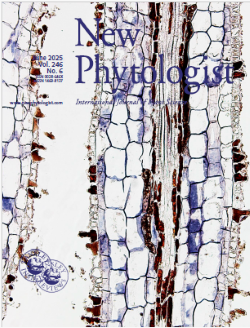2025-05-27 広島大学
広島大学大学院統合生命科学研究科の山田大綱特任助教と和崎淳教授らの研究チームは、リンが極端に少ない土壌でも育つ植物「ピンクッションハケア(Hakea laurina)」の根の分泌メカニズムを解明しました。この植物は、リン吸収を促進する有機酸や酸性ホスファターゼを、クラスター根の皮層組織から分泌していることが判明しました。さらに、通常の植物に見られるスベリン外皮が形成されず、分泌物が根圏土壌にスムーズに拡散されることで、高いリン獲得能力を実現していることが明らかになりました。この成果は、作物への応用によるリン資源の効率的利用に貢献する可能性があります。

図1. New Phytologistの表紙に、本研究チームが撮影した写真が採用されました。(背景写真は、ピンクッションハケアのクラスター根におけるリンゴ酸トランスポーター遺伝子HalALMT1の発現部位)
<関連情報>
- https://www.hiroshima-u.ac.jp/news/90526
- https://nph.onlinelibrary.wiley.com/doi/full/10.1111/nph.70010
深刻なリン欠乏土壌に自生するハコベの成熟した群生根の皮質においてHalALMT1がリンゴ酸の流出を媒介する HalALMT1 mediates malate efflux in the cortex of mature cluster rootlets of Hakea laurina, occurring naturally in severely phosphorus-impoverished soil
Hirotsuna Yamada, Lydia Ratna Bunthara, Akira Tanaka, Takuro Kohama, Hayato Maruyama, Wakana Tanaka, Sho Nishida, Tantriani, Akira Oikawa, Keitaro Tawaraya, Toshihiro Watanabe, Shu Tong Liu, Patrick M. Finnegan, Hans Lambers, Takayuki Sasaki, Jun Wasaki …
New Phytologist Published: 24 February 2025
DOI:https://doi.org/10.1111/nph.70010
Summary
- Hakea laurina, a woody Proteaceae, naturally occurs in severely phosphorus (P)-impoverished habitats in southwest Australia. It develops distinctive cluster roots that exhibit a high capacity for carboxylate exudation and acid phosphatase activity, contributing to its P acquisition. However, the molecular mechanisms underlying these physiological functions remain poorly understood.
- We explored the cluster-root transcriptome using de novo RNA-Seq and identified Hakea laurina Aluminum-activated Malate Transporter 1 (HalALMT1), encoding an aluminum (Al)-activated malate transporter induced in mature cluster roots. We characterized HalALMT1 through electrophysiological assays and overexpression in Arabidopsis thaliana, and localized HalALMT1 expression, acid phosphatase activity, and suberized boundaries in cluster roots.
- Differentially expressed genes highlighted multiple increased carboxylate-related processes at cluster-root maturity. HalALMT1 released malate, an activity further enhanced by exposure to Al3+. Notably, HalALMT1 was specifically expressed in mature cortex cells of cluster rootlets, which lack a suberized exodermis. Acid phosphatase activity was pronounced throughout the cluster rootlets, unlike in noncluster roots where it was limited to the epidermis and stele.
- Substantial malate release and acid phosphatase activity in the cortex cells in cluster rootlets, which lack a suberized exodermis, allowed massive exudation. This study sheds light on an exquisite P-acquisition strategy of Proteaceae, enabling survival under extremely low P availability.



